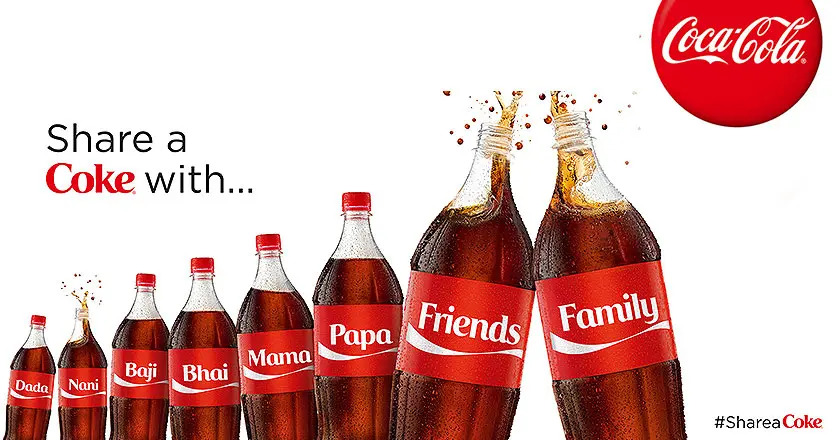Are you tired of hearing jingles in your head long after the commercials have ended? Have you ever found yourself humming a tune to a catchy advertisement even though you can’t remember the brand’s name? If so, then you know the power of advertising in brand building!
Advertising has been around for centuries, and it has come a long way from painting signs on the side of a building to social media ads. Today, we are bombarded with ads on our phones, social media platforms, TV, radio, and just about everywhere we turn. Love it or hate it, advertising is a crucial part of modern-day brand building.
But have you ever wondered why advertising is so important in building a brand? How does a simple 30-second commercial or an online banner ad help to create and maintain a brand’s identity and reputation? In this blog, we will explore advertising and how it helps in brand building.
What is Branding?
Branding is the process of creating a unique identity for a product, service, or company in the consumer’s mind. It encompasses all aspects of the business, including its name, logo, messaging, and customer experience. A strong brand creates a positive association with the consumer and communicates the company’s values, personality, and positioning in the market.
Branding is essential for businesses as it helps to differentiate them from their competitors and creates a loyal customer base. A strong brand strategy may also improve consumer loyalty, brand recognition, and overall profitability. However, it necessitates consistent messaging, client involvement, and a thorough knowledge of the target market.
Branding is not just limited to physical products or services but can also extend to personal branding, where individuals create a unique identity for themselves to distinguish themselves from others in their professional or personal lives. In the end, branding is all about establishing an emotional bond with the consumer, gaining their trust and loyalty, and promoting an excellent reputation in the field of business.
What is Advertising?
Advertising is a form of marketing communication that promotes a product, service, or idea to a target audience. Advertising aims to create awareness, generate interest, and stimulate demand for a product or service.
Advertising can be delivered through various media channels. It can be a simple message, image, or video designed to elicit emotional responses or convey specific information about the product or service. Effective advertising requires a deep understanding of the target audience, their needs, and their behavior. Advertising campaigns must be tailored to specific audiences and their preferences, varying by age, gender, location, and cultural background.
The ultimate aim of advertising is to influence consumer behavior by convincing them to buy a product or service. Successful advertising campaigns can lead to increased sales, customer loyalty, and brand recognition. However, advertising must be done ethically and responsibly, avoiding deceptive or misleading claims that could harm consumers.
How advertising can help branding?

Advertising can play a critical role in building and maintaining a brand’s reputation and image. When done effectively, advertising can increase brand awareness, create positive associations, and establish a strong emotional connection with consumers. There are several ways that advertising can help with branding:
Consistent Platforms used for Advertising
Consistent advertising platforms may support a brand’s identity and message. For example, a company may develop a strong online presence and brand awareness by regularly running advertisements on social media sites like Instagram, Twitter, and Facebook. Consumers may feel reliable and confident by seeing consistency across platforms.
Consistent Advertising Design
Having a consistent visual identity across all advertising materials can help to establish a brand’s identity and differentiate it from competitors. Consistency in design can create a sense of familiarity and recognition with consumers, making it easier for them to identify and remember the brand. Using consistent colors, fonts, and imagery can also help to convey the brand’s personality and message.
Stick to the Theme or Tone
Maintaining a consistent theme or tone in advertising helps create a strong emotional connection with consumers. For example, if a brand’s messaging consistently emphasizes quality and reliability, it can create a sense of consumer trust. Sticking to a specific theme or tone helps establish the brand’s personality and make it more relatable to consumers.
The reputation and image of a brand may be built and maintained with the help of advertising. Advertising may assist in establishing brand recognition, fostering customer trust, and fostering a powerful emotional connection by employing consistent platforms, designs, and content. By investing in efficient advertising techniques, brands may profit from greater consumer loyalty, brand awareness, and ultimately higher sales.
Difference between Branding and Advertising
Branding and advertising are two different concepts, although they are related. Branding refers to the overall image and identity of a company, product or service. At the same time, advertising is the marketing communication used to promote a product, service or idea to a target audience. Here are some key differences between branding and advertising:
| Key Differences | Branding | Advertising |
| Focus | Branding is more focused on creating a brand identity. | Advertising is more focused on promoting a specific product or service. |
| Long-term vs Short-term | Branding is a long-term process that involves establishing a brand’s identity and reputation over time. | Advertising is typically a short-term tactic used to generate immediate sales or interest. |
| Scope | Branding encompasses all aspects of a brand’s identity, including its name, logo, design, messaging, and reputation. | Advertising is focused on a specific campaign or message. |
| Strategic vs Tactical | Branding is a strategic process that involves developing a brand’s identity and positioning in the market. | Advertising is a tactical tool used to execute specific marketing campaigns. |
| Audience | Branding is focused on creating a consistent identity and message that resonates with a broad audience. | Advertising is focused on reaching a specific target audience with a particular message. |
Despite their similarities, branding and advertising have different goals and call for different approaches. While advertising focuses on promoting certain goods or services to a specified audience, branding is concerned with building a long-term brand identity and reputation.
How is Advertising and Brand Building Related?
Advertising and brand building are intricately linked, with advertising serving as a vital tool in the process of establishing, nurturing, and reinforcing a brand’s identity and presence in the marketplace. Through strategic messaging, visual elements, and engagement tactics across various channels, advertising endeavors to create awareness, shape perceptions, and foster connections with consumers.
By consistently communicating the brand’s values, personality, and unique offerings, advertising campaigns contribute to building brand equity, loyalty, and differentiation from competitors. In essence, advertising acts as the amplifier of a brand’s story, helping to cement its position in the minds of consumers and ultimately driving long-term success and growth.
How to Advertise your Brand – Brand Advertising Strategy
Advertising can be a highly effective way to promote your brand and reach new audiences. Here are some steps to help you advertise your brand effectively:
Create a Budget
Determining your budget is one of the first steps in advertising your brand. This will help you identify the types of advertising channels feasible for your brand. Consider how much you can afford to spend on advertising, and allocate funds appropriately across different channels and campaigns.
Create an ad copy or creative
Your ad copy or creative is the message or visual that will communicate your brand’s message to your target audience. It should be attention-grabbing, memorable, and consistent with your brand’s identity and messaging. Consider using eye-catching visuals, compelling headlines, and clear calls to action to make your ad more effective.
Choose Advertising Platform
There are many different advertising platforms, including social media, search engines, online display ads, and traditional media such as television, radio, and print. Consider your target audience, budget, and marketing goals when choosing an advertising platform. Consider which platforms your competitors are using and the effectiveness of each forum.
Track Ad Performance
Tracking ad performance is critical to ensure your advertising is effective and optimize your campaigns. Use tools like Google Analytics to track metrics such as impressions, click-through rates, and conversions. Continually monitor and adjust your campaigns based on these metrics to improve performance.
While it needs careful preparation and execution, advertising can be a potent tool for brand promotion. You may design efficient advertising campaigns that support your company’s growth by setting a budget, coming up with excellent ad content or creativity, selecting the best advertising platform, and monitoring ad performance.
Branding Advertising Examples
Nike: Just Do It

Nike has been saying “Just Do It” for 30 years now, and nobody remembers that their products once catered almost exclusively to marathon runners. And Reebok was well ahead of them; they weren’t even the market leader in that industry.
Nike established this slogan in 1988 during a meeting with the advertising agency Wieden & Kennedy. As part of the advertising campaign, professional and amateur athletes discussed their accomplishments and feelings when training. Walt Stack, an 80-year-old marathoner, is shown in one of the campaign’s initial television commercials explaining how he completes 17 miles of running every morning. People were moved by stories like Walt’s and questioned, “If he can do it, why can’t I?” as a result.
The hashtag #JustDoIt is currently used in over 15 million Instagram posts, a significant number written by regular individuals. This phrase captures an uplifting sentiment that perfectly matches this sportswear firm’s character.
One of the finest advertisements ever created was Nike’s due to the people’s emotional reactions.
Coca-Cola: Share a Coke

One of the best instances of brand interaction and how far branded hashtags and customization can take advertising is #ShareACoke. In 2011, Coca-Cola initially debuted this campaign advertisement in Australia, encouraging viewers to use the hashtag “Share a Coke” while posting their material online.
The theme of the advertising campaign was consumers’ passion for customization. One of the top 150 names in the nation was used to personalize the wrapping around each Coca-Cola bottle by the company. Customers were urged to search the shop for a bottle with their name or to split a Coke they obtained from the vending machine with a buddy whose name was on the bottle.
On the Coke website, they could even place personalized bottle orders to include requests for nicknames and school logos.
Personalizing Coke was one of the outstanding examples of product promotion that sparked interest in the brand.
Fill the below form with your advertising requirement.
FAQs Related to Advertising
How can display advertising be used for the purpose of brand building?
Display advertising can be used for brand building by creating visually appealing and engaging ads that capture the attention of potential customers. These advertisements, which may be posted on websites, social media platforms, or mobile applications, can raise brand recognition and exposure. Display advertising may assist in establishing and maintaining a brand’s identity and reputation over time by utilizing consistent branding components, including logos, colors, and messages.
What is the connection between advertising and brand building?
Advertising plays a crucial role in brand building by helping to create and maintain brand awareness, identity, and reputation. Advertising campaigns are designed to communicate a brand’s message to a target audience using various marketing channels such as television, radio, print, online, and social media. By using consistent branding elements such as logos, colors, and messaging, advertising can help to establish and reinforce a brand’s identity and reputation over time.
Advertising also helps create emotional connections between consumers and a brand, leading to increased loyalty and sales. In short, advertising and brand building are closely interconnected, as advertising is a key tool for building and promoting a brand.
Why is advertising important in promoting a brand?
Advertising is essential in promoting a brand for several reasons:
1. Increases brand awareness: Advertising helps to increase the visibility of a brand by reaching out to a wide range of potential customers across various marketing channels such as television, radio, print, online, and social media.
2. Builds brand identity: Advertising helps to establish and reinforce a brand’s identity and personality through consistent messaging, visual elements such as logos and color schemes, and tone of voice.
3. Establishes emotional connections: Advertising creates emotional connections between consumers and brands, which can lead to increased brand loyalty and advocacy.
4. Differentiates from competitors: Advertising can help a brand to differentiate itself from its competitors by highlighting its unique features, benefits, and values.
5.Drives sales and revenue: Effective advertising campaigns can increase sales and revenue by promoting products and services to potential customers and encouraging them to purchase.
Advertising plays a critical role in promoting a brand by increasing brand awareness, building identity, establishing emotional connections, differentiating from competitors, and driving sales and revenue.
What is the difference between advertising and branding?
Advertising and branding are two closely related but distinct concepts in marketing. Advertising promotes a product or service through various channels, such as television, radio, print, online, and social media. It involves creating and disseminating a message to attract potential customers and generate sales.
On the other hand, branding is the process of creating a unique identity and personality for a product or service, which includes developing a name, logo, and visual identity, as well as establishing brand values and positioning in the market. Advertising is a tool for promoting a brand, while branding is the overall strategy for establishing and maintaining a brand’s identity and reputation.






I read an insightful article about the importance of advertising in shaping brand perception and visibility. The article explained how strategic advertising can help reach the right audience and convey the essence of a brand, which is crucial for brand building. I found the article to be well-written and informative, as it brilliantly outlined how strategic advertising fosters brand recognition and loyalty.
thank you!